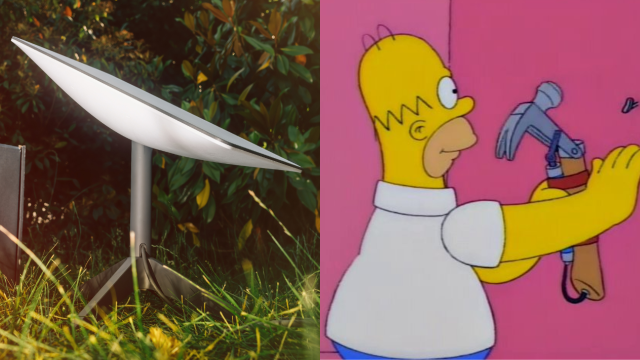Last week, Telstra debuted its new Starlink-powered satellite internet plans, a year after announcing a collaboration with the Elon Musk/SpaceX-owned satellite internet network. The plans are quite expensive, and based on speeds and costs compared to both Starlink itself and NBN alternatives in rural and regional Australia, we highly recommend weighing your options before committing to a Telstra satellite plan. However, among the excitement, there was one point that caught some readers off-guard, and it has to do with illegal Starlink installations.
In no way are we saying that you shouldn’t install Starlink in your home, and we would never suggest that our readers would ever do something outside of the law. That said, if you’re thinking of picking up Starlink, there’s one part of the installation that could get you into trouble if the wrong approach is taken – and it comes down to registered cabling.
Why is it illegal to install Starlink cables in your roof and walls yourself?
We did a really good explainer on the legality of installing Starlink in your home on our TikTok, but the TLDR is that, under the Telecommunications Cabling Provider Rules 2014 (on top of the Telecommunications Act 1997), Australians are prohibited from doing their own concealed cable fitting in their home – this includes through walls, roofs, and floors. This doesn’t include basic jobs like running ethernet cables around your home, but it does include cables behind walls.
It’s also true for other forms of cabling, such the installation of concealed NBN cables (as pointed out by Choice), but because a huge part of Starlink adoption comes down to the fitting and installation of a crucial component (the satellite dish), users might be inclined to go all the way and run dedicated, concealed in-roof and wall cables inside and out.
That’s fine, but if you want to go this route, you need to either be a registered cabler yourself, or you need to hire a registered cabler to do the work for you. The good news is that finding cablers capable of doing this is only a quick Google away, and although it wasn’t available on release, Telstra will soon offer professional installation of its satellite internet plans with its Starlink offering.
But it’s not all bad, right? You’re not breaking the law by buying Starlink, you’re not even breaking the law by having it on your roof (though, obviously, please be safe and don’t do anything reckless, and Telstra recommends hiring a registered professional), but when it comes to installing permanent cabling, that’s when you’re on thin ice. It’s a safety requirement and it exists for your own good.
So Starlink isn’t illegal, then?
No, Starlink isn’t illegal! If the cables you’re using to access Starlink satellite services are not permanent, in that they’re readily accessible and not fitted/concealed behind walls, under floors or in your roof, then that’s fine. You could have your Starlink satellite set up on a balcony, with the cables running through your door or window, servicing your internet inside, without running into any legal hiccups – but obviously, you’d need to make sure you don’t trip on the cables, and you’d need to ensure they can’t be easily damaged (such as, for example, by a cable-chewing cat).
If you’re getting a satellite internet plan from Telstra, we hope you enjoy it. Just please be safe and operate legally.
Image: Telstra
